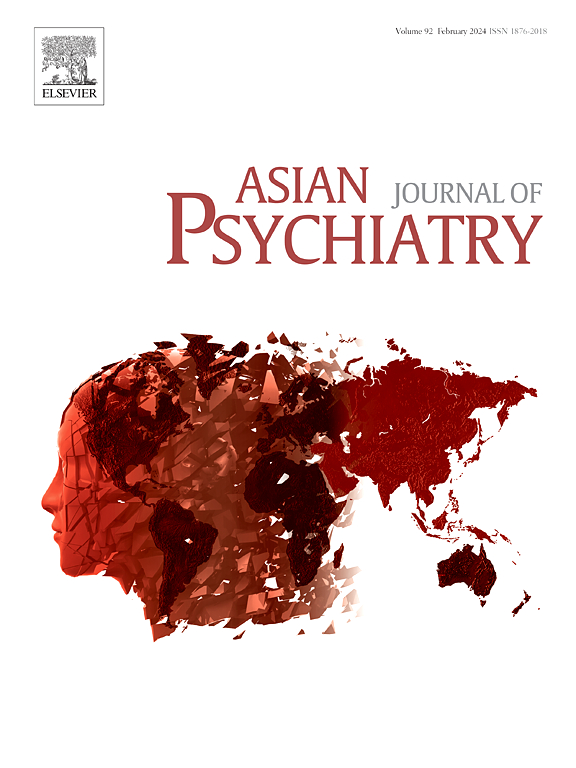The prevalence of alexithymia in schizophrenia: A systematic review and meta-analysis
IF 3.8
4区 医学
Q1 PSYCHIATRY
引用次数: 0
Abstract
Objectives
This study aims to systematically evaluate the prevalence of alexithymia in patients with schizophrenia.
Methods
Computer searches were conducted in PubMed, PsycInfo, Web of Science, The Cochrane Library, EMBASE, China National Knowledge Infrastructure (CNKI), Wanfang Database, VIP Database, and China Biology Medicine (CBM) electronic databases to collect studies that utilized the TAS-20 scale as a measurement tool with clearly defined diagnostic criteria to determine the prevalence of alexithymia in patients with schizophrenia, from the inception of the databases to December 29, 2023. Two researchers independently screened the literature, extracted data, and evaluated the risk of bias in the included studies, followed by meta-analysis using Stata 16.0 software.
Results
A total of 17 studies with 5628 participants were included. The results of the meta-analysis showed that the prevalence of alexithymia in patients with schizophrenia was 35 % (95 % CI: 32–38 %). Subgroup analysis indicated that male gender, smoking, Asian ethnicity, case-control design and divorce were associated with higher rates of alexithymia (all P<0.05).
Conclusion
The prevalence of alexithymia in patients with schizophrenia is relatively high (35 %). However, due to limitations in the quality and quantity of included studies, further high-quality literature is needed to confirm the above conclusion.
精神分裂症患者亚历山大症的患病率:系统回顾和荟萃分析。
研究目的本研究旨在系统评估精神分裂症患者无情感倾向的患病率:在PubMed、PsycInfo、Web of Science、The Cochrane Library、EMBASE、中国国家知识基础设施(CNKI)、万方数据库、VIP数据库和中国生物医学(CBM)电子数据库中进行计算机检索,收集自数据库建立之初至2023年12月29日期间,以TAS-20量表为测量工具、明确诊断标准的研究,以确定精神分裂症患者无情感倾向的患病率。两名研究人员独立筛选文献、提取数据并评估纳入研究的偏倚风险,然后使用Stata 16.0软件进行荟萃分析:结果:共纳入 17 项研究,5628 名参与者。荟萃分析结果显示,精神分裂症患者的无情感倾向发生率为 35%(95% CI:32-38%)。分组分析表明,男性性别、吸烟、亚洲人种、病例对照设计和离婚与较高的无情感障碍发生率有关(全部为 PC 结论:精神分裂症患者的无情感倾向发生率相对较高(35%)。然而,由于所纳入研究的质量和数量存在局限性,因此需要更多高质量的文献来证实上述结论。
本文章由计算机程序翻译,如有差异,请以英文原文为准。
求助全文
约1分钟内获得全文
求助全文
来源期刊

Asian journal of psychiatry
Medicine-Psychiatry and Mental Health
CiteScore
12.70
自引率
5.30%
发文量
297
审稿时长
35 days
期刊介绍:
The Asian Journal of Psychiatry serves as a comprehensive resource for psychiatrists, mental health clinicians, neurologists, physicians, mental health students, and policymakers. Its goal is to facilitate the exchange of research findings and clinical practices between Asia and the global community. The journal focuses on psychiatric research relevant to Asia, covering preclinical, clinical, service system, and policy development topics. It also highlights the socio-cultural diversity of the region in relation to mental health.
 求助内容:
求助内容: 应助结果提醒方式:
应助结果提醒方式:


